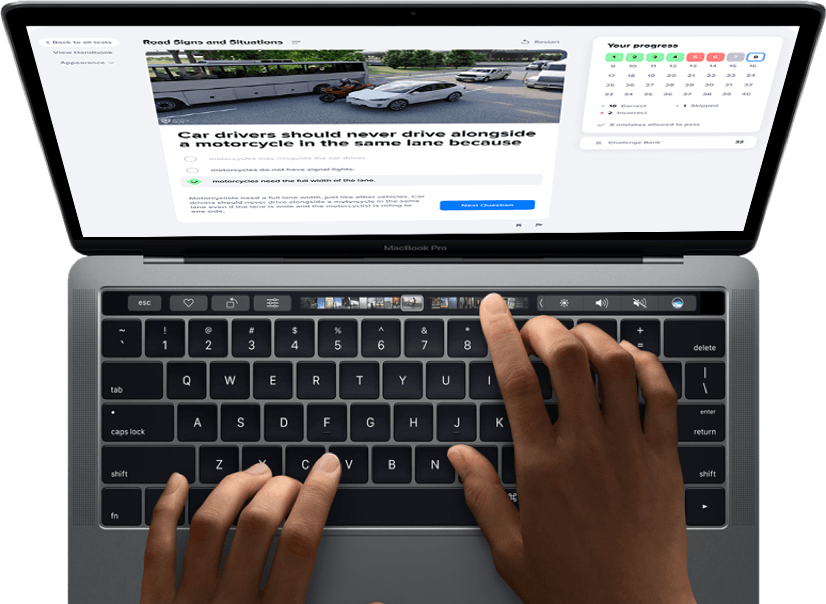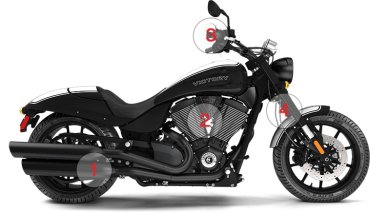
Learn how to get your ID learner's permit or driver's license and schedule your driving test in Idaho with this step-by-step guide. Discover what to expect, things you need, and how to get behind the wheel faster.

Pass your Idaho DMV driver's test the first time, guaranteed. Be fully prepared in days, not weeks with Premium.
Tell me more!
If you are an Idaho driver, or would like to become one, you will need an Idaho driver’s license. To get the license, you will have to collect the documentation required, pass vision, knowledge and skills tests and pay the fees. To save you some time, here is a step by step guide that you will need to follow to get a driver's license in Idaho. Oh, and if you're planning a road trip through Idaho's picturesque landscapes and might be driving a manual transmission car, make sure you're equipped with the right skills. Learn the essentials with our Stick Shift guide.
Pro tip: If you're venturing through Idaho's rugged landscapes, it's essential to be well-versed in driving techniques. Our instructional resources on manual gear operation and effective parallel parking will elevate your skills. Discover the correct procedures for maneuvering into parking spaces and three-point turns. Ensuring your mirrors are properly adjusted is crucial for visibility and safety. Our Online Driving Simulator provides realistic practice scenarios, and for international visitors, familiarize with Idaho's international driver's license requirements.

It is the basic non-commercial driver's license. It allows you to operate a regular car with a gross vehicle weight rating (GVWR) that does not exceed 26,000 pounds, does not carry more than 16 persons including the driver, and is not marked for the transport of hazardous materials. You may also operate military, recreational and farm vehicles, firefighting and emergency equipment. Read the ID Driver's Manual or take a free ID practice test.

It allows you to operate different types of commercial vehicles. A commercial vehicle is a vehicle that either has a manufactured GVWR of 26,001 pounds or more, is placarded for hazardous materials, or designed to carry 16 people or more. Read the ID CDL Manual or take a free ID CDL general knowledge practice test.

It is required to be added to your driver's license if you wish to operate a motorcycle on public roadways. A motorcycle is defined as a motor vehicle that has a seat or saddle for the use of the rider and is designed to travel with not more than three wheels in contact with the ground. Tractors and mopeds are not classified as motorcycles. Read the ID Motorcycle Operator's Manual or take a free ID motorcycle practice test.
For drivers under 17, the instruction permit is the first stage of Idaho's Graduated Driver's License (GDL) program. It allows you to practice driving, supervised by a licensed driver at least 21 years of age who is sitting in the front seat next to you. You must hold a supervised instruction permit for at least six months after completing Driver's Ed or until your 17th birthday (whichever comes first).
You can apply at a driver's licensing office close to you. Use this map to locate DMV offices. Not all offices offer driver license services, so check before you go.
Use the interactive Add the Star tool to choose the correct documentation easily.
If you have legally changed your name so that it no longer matches that on your documentation, you must also have the Social Security Administration update your name before you go and bring the legal proof of your new name (e.g., a certified marriage certificate, certified divorce decree, etc.).
Prove that you are enrolled in or have graduated from secondary school or the equivalent. Provide one of the following:
Your parent, guardian or spouse (of at least 18 years of age) must accompany you to the DMV office and sign their consent. If this person is not your birth parent, also provide documentation verifying your relationship (such as adoption records, court guardianship documents, or a marriage certificate).
You must meet a minimum standard of 20/40 vision in at least one eye, with or without corrective lenses.
$3.00 for the knowledge test and $15.00 for the permit paid by card (American Express, Discover Card, MasterCard, or Visa), cash, check or money order.
The test doesn't require an appointment. Make sure you practice online before you go. If you fail the test, you'll wait at least 3 days before trying again and pay another test fee.
Your plastic permit should be mailed to you within three weeks. You may practice driving supervised at all times. Your Class D instruction permit is valid for 180 days. If you haven't obtained a driver's license by the time your permit expires, you may renew your instruction permit once only to keep driving. After that, you will have to apply for a new permit.
The Class D underage driver's license is the second stage of Idaho's Graduated Driver's License (GDL) program. An underage driver's license allows you to drive unsupervised but with some restrictions:
For the first six months, you may not carry more than one passenger younger than 17 years of age who is not a member of your family. This restriction will last until you turn 17.
If you are younger than 16 years of age, you may drive unsupervised only during daylight hours. At all other times, you must be accompanied by a licensed driver who is at least 21 years of age and is sitting next to you in the front seat. No passengers other than this supervising driver are allowed in the front seat.
Use the interactive Add the Star tool to choose the correct documentation easily.
When you turn 17, all restrictions on your unsupervised driving will be lifted, and your underage driver's license will provide you the same driving privileges as a full unrestricted driver's license.
Your underage driver's license will expire five days after your 18th birthday. You will have to renew it during those five days (which doesn't give you much time). When you do so, you will be issued a full unrestricted Class D driver's license.
To apply for a Class D full (unrestricted) driver's license, you must pass a vision test, a written knowledge test, and a skills (road) test. If you are older than 17, you can apply for an Idaho class D driver's license without holding a supervised instruction permit first. However, you can still choose to apply for the permit if you want to get some supervised driving practice.
First timer? Start with Step 1.
Got an instruction permit? Start with Step 7.
Got an underage driver's license? It will expire 5 days after your 18th birthday. You will have to renew it during those five days (which doesn't give you much time) at a DMV office. When you do so, you will be issued a full driver's license, valid for 3 years.
You can apply at a driver's licensing office close to you. Use this map to locate DMV offices. Not all offices offer driver license services, so check before you go.
You must verify the following:
Use the interactive Add the Star tool to choose the correct documentation easily.
If you have legally changed your name so that it no longer matches that on your documentation, you must also have the Social Security Administration update your name before you go and bring the legal proof of your new name (e.g., a certified marriage certificate, certified divorce decree, etc.).
Prove that you are enrolled in or have graduated from secondary school or the equivalent. Provide one of the following:
Your parent, guardian or spouse (of at least 18 years of age) must accompany you to the DMV office and sign their consent. If this person is not your birth parent, also provide documentation verifying your relationship (such as adoption records, court guardianship documents, or a marriage certificate).
The forms are not available online, instead, you must get it at the DMV office.
You must meet a minimum standard of 20/40 vision in at least one eye, with or without corrective lenses.
The test doesn't require an appointment. Make sure you practice online before you go. If you fail the test, you'll wait at least 3 days before trying again and pay another test fee. The knowledge test fee is $3.00 paid by card (American Express, Discover Card, MasterCard, or Visa), cash, check or money order.
The DMV office will give you a list of available certified skills testers when you submit your application for the license. You can also see the list of testers here. Some skills testers only test commercial drivers, so choose a nearby skills tester carefully and make an appointment.
Provide your own vehicle in good working order, complete with license plate, registration, and proof of liability insurance, a photo ID and the receipt for the county portion of the skills test fee ($6.50).
The skills test fee paid to the skill tester is $17.50.
The license fee varies depending on the period of validity of the license: